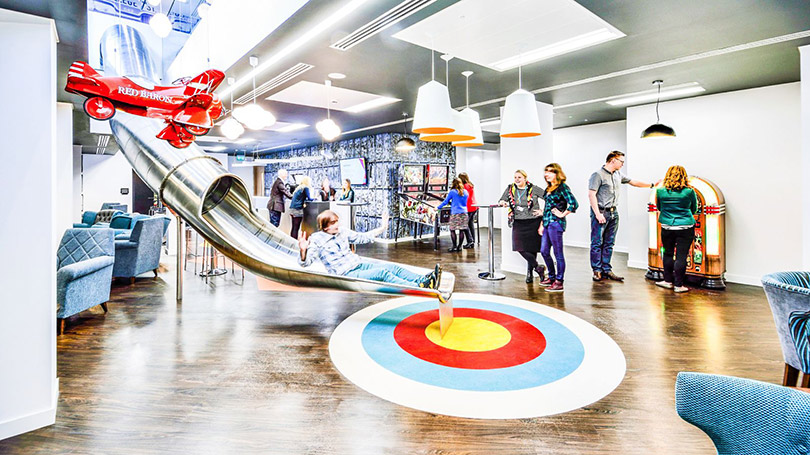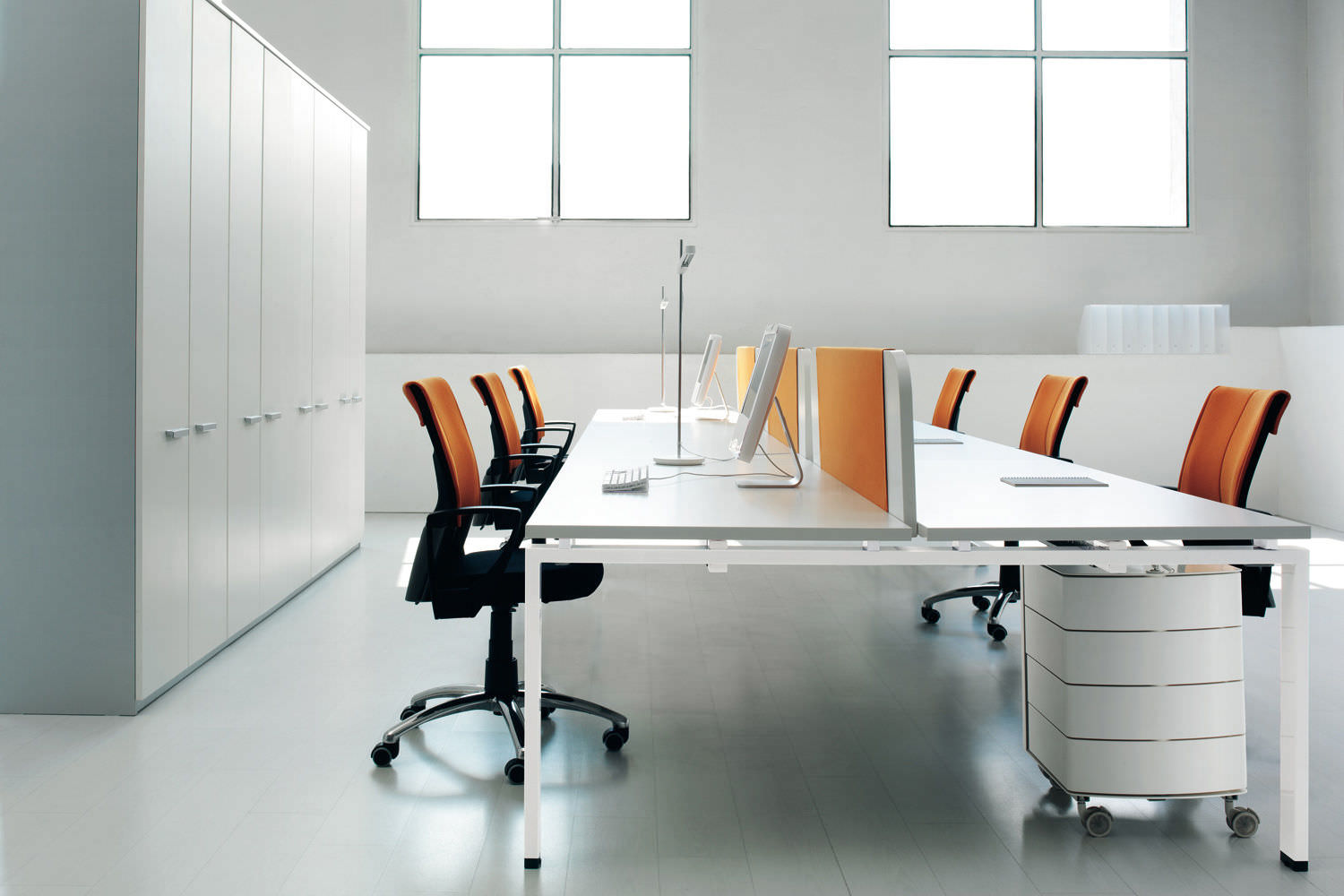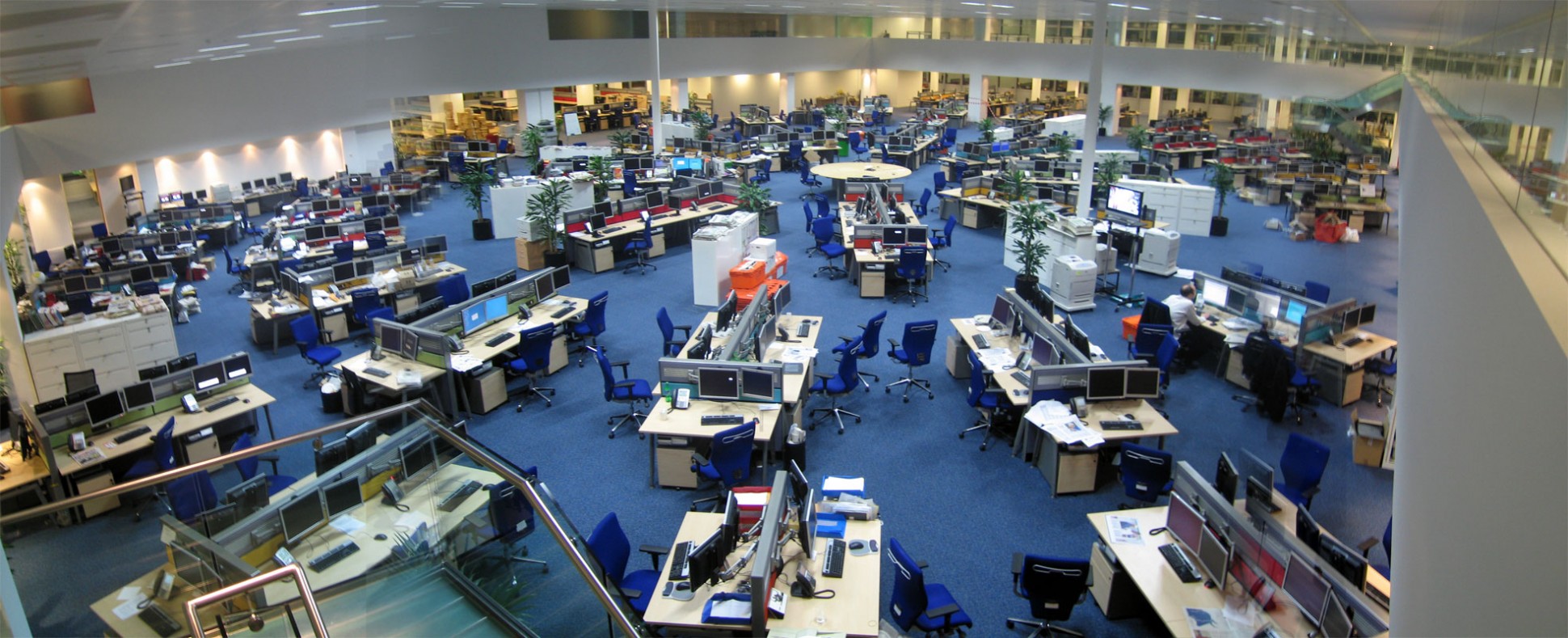What is good or bad office open. Analysis of conditions

It doesn’t look very comfortable, and probably it is.
Office work is one of the most common today. The offices are representatives of the most extensive range of specialties. One of the most common options for office space - open offices. This is the name of the office planning option, in which the main features are a large amount of free space for lower and middle managers, large cabinets for top managers, plus closed meeting rooms and a rest room (of course, there is not always).
It is believed that open offices have a number of advantages over standard offices, where almost any employee has his own office, or there is a small number of employees in the office — for example, the same bookkeeping. People who perform approximately the same functions work in the same room, which, in principle, is also not without sense. So what are the advantages of open offices? And are these benefits real? Let's get a look.
So, the advantages of an open office are the following:
')
- Reducing the cost of maintaining the office (this is the lower cost of renting a room or land, and, as a result, less construction costs);
- Opportunity to place on one area a larger number of employees in an open office than in individual offices, all other things being equal;
- Ease of planning and redevelopment;
- Simplify the process of communication between employees. There is no need to go from office to office - everything is in sight, most of the employees have direct access;
- The possibility of organizing collective discussion and solving business problems;
- Unification of the style of the room and all the elements in this room.

Source: LinkedIn
The disadvantages of open offices
Of course, along with the advantages, such offices have disadvantages. Over time, deficiencies are revealed more and more. The main thing is the negative impact of work in such a place on the psychological mood of employees with the result in the form of a drop in productivity.
As an example, the situation with the transfer of employees from the virtual office, when everyone worked at home, to the real office, and even an open type. Four years ago, the owner of a small company, Chris Nagele, decided to stop the practice of working remotely with a distributed office and transferred all the employees to a single room. But it was a mistake. Almost all employees were unhappy, the work ceased to be productive, the company's profit fell. In April 2015, three years after moving to an open office, Nagele decided to move to a larger room with separate offices. The productivity of employees immediately increased, and there were much more satisfied with their workplace.
Currently, in the same US, about 70% of all offices are open offices. Only a few of the companies that have tried such offices return to the old practice, with separate rooms for everyone, or try something else, such as remote work from home. At the same time, the results of statistical studies show disappointing results for owners of open-type offices. Here, on average, employee productivity is 15% less efficient than that of employees with other types of offices. This is due to the complexity of concentration - especially if there are no cubicles in the offices, and everyone is sitting at the tables in a row.
The owner of the company, which was discussed above, said that his colleagues and acquaintances complain about open offices: “Many people agree - they cannot stand such offices. They can not finish anything and take the work at home. " Of course, it is unlikely that the concept of an open office will soon become obsolete, but some companies, understanding all the difficulties of working in such offices, are gradually moving away from the once established standard.
Concentration at work? It's almost impossible
Above, it was mentioned several times that in an open office it is difficult to focus on work. But without this, work is simply impossible. You cannot be at the same time immersed in the performance of another important task and at the same time engage in another conversation with a neighbor, react to noise or do something else. All these telephone conversations nearby, the movements of neighbors, the noise, the flickering of employees passing by interfere with immersion in work.
Some open offices are very quiet, strict order reigns. People are working at computers in complete silence. It would seem that complete silence should lead to the possibility of focusing employees on work tasks. But, as shown by the results of surveys, and here the staff are unhappy - the atmosphere in the "quiet" offices is called oppressive.

In some cases, prolonged work in an open office adversely affects memory. This is especially true for the very open office without booths, where there are only tables in a row, computers and chairs. Working here is not that extremely difficult, but rather difficult.

According to Sally Augustin (Sally Augustin), a psychologist from Illinois, working in a closed office, a person remembers more information than a colleague can remember in an open office. This does not manifest immediately, but in general, this is so, because in the latter case a person is affected by many distracting factors that interfere with work. For most of us, noise is the most critical problem.
Scientists from the University of Sydney conducted a survey, getting impressive results about job satisfaction with people in closed offices. The results of the study clearly show that about 50% of employees from fully open offices and about 60% of employees from open offices with booths are dissatisfied with their openness to one and all.
As mentioned above, one of the advantages of open offices is the increased communication between employees - after all, you can contact a colleague immediately, without going to another office. And this is true, only this communication is rarely business in nature. Usually, employees simply talk about all kinds of unrelated things in the process. Accordingly, the effectiveness of such labor decreases. Yes, a person can work in almost any conditions, but still the quality of such work will not be too high. People at work should communicate with each other not only on work topics, so that the team is more coherent. But here's a paradox, this should be done not during working hours, but, for example, during lunch. There is another side to the medal of communication in the office of an open office. So, in the absence of walls between employees, conversations between them in some cases become no more, but less long. Some employees begin to avoid communicating with their own colleagues, since the conversation is no longer private, everyone can hear it.
Some companies whose employees are engaged in work that requires a high degree of concentration (writing texts, planning advertising campaigns, financial planning, developing software), are experimenting with the choice of quiet rooms and closed spaces. However, in some cases, the employees themselves do not want to leave the open office too much to a closed room, considering this to be a sign of weakness. In any case, some employees of companies talk about this feeling, where open-type offices are changed to closed premises.
Among other shortcomings of open offices is also called the excessive waste of staff time on assisting their colleagues. Since there are no boundaries, each helps colleagues more than fulfills his own tasks.
Some financial calculations
It is believed that an open office is a good way to save on offices for all employees, planning, etc. But this is not so simple, as there are indirect costs and costs. If the drop in the productivity of employees in open offices really takes place (and this is so, judging from some research ), then the company saves on little things, losing big. Another study shows that employees of offices of this type spend about 86 minutes a day on various distractions (talking with a colleague, trying to concentrate in noise, etc.). As a result, all this takes about 17% of the working time, which is not enough.

As an example, you can take a spherical office
Also, take the average salary of your employee at $ 50,000 per year. This is $ 5 million per month for the entire company.
But if we take into account the drop in employee productivity by 15% (or even more) in an open office compared to regular offices, we receive a loss of $ 750,000, since we will receive only 85% of the maximum possible result of the company's employees. As a result, if you take a savings of $ 172,000 in office space, it turns out that the company loses $ 578,000 per year ($ 750,000 loss from the fall in employee productivity minus $ 172,000 of savings).
Is it worth it? In most cases, in open offices, the team or teams of employees do not work as effectively as in closed, familiar to many offices. So here the savings are often imaginary.
Do you think open offices are effective, and if so, why?
Source: https://habr.com/ru/post/400661/
All Articles